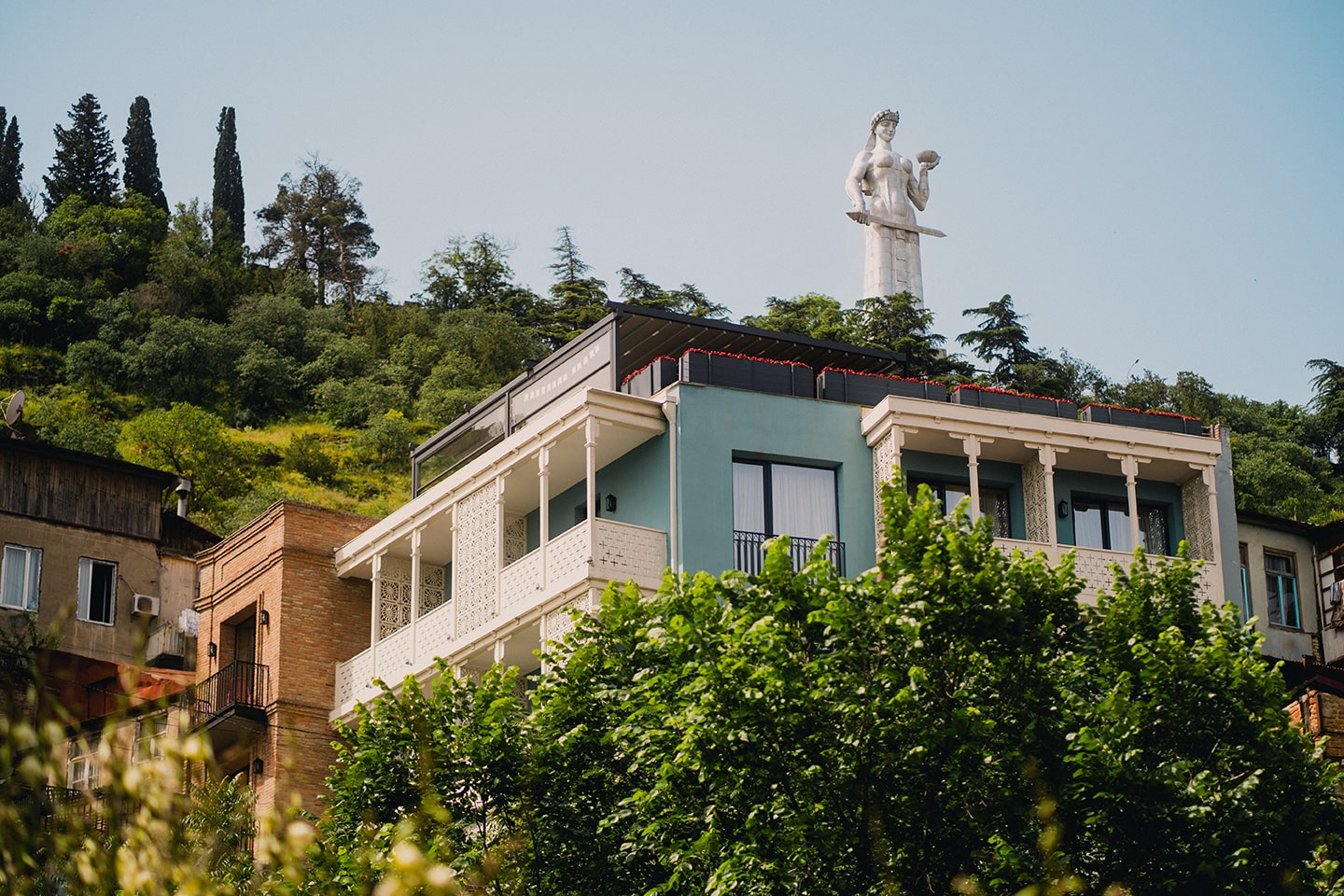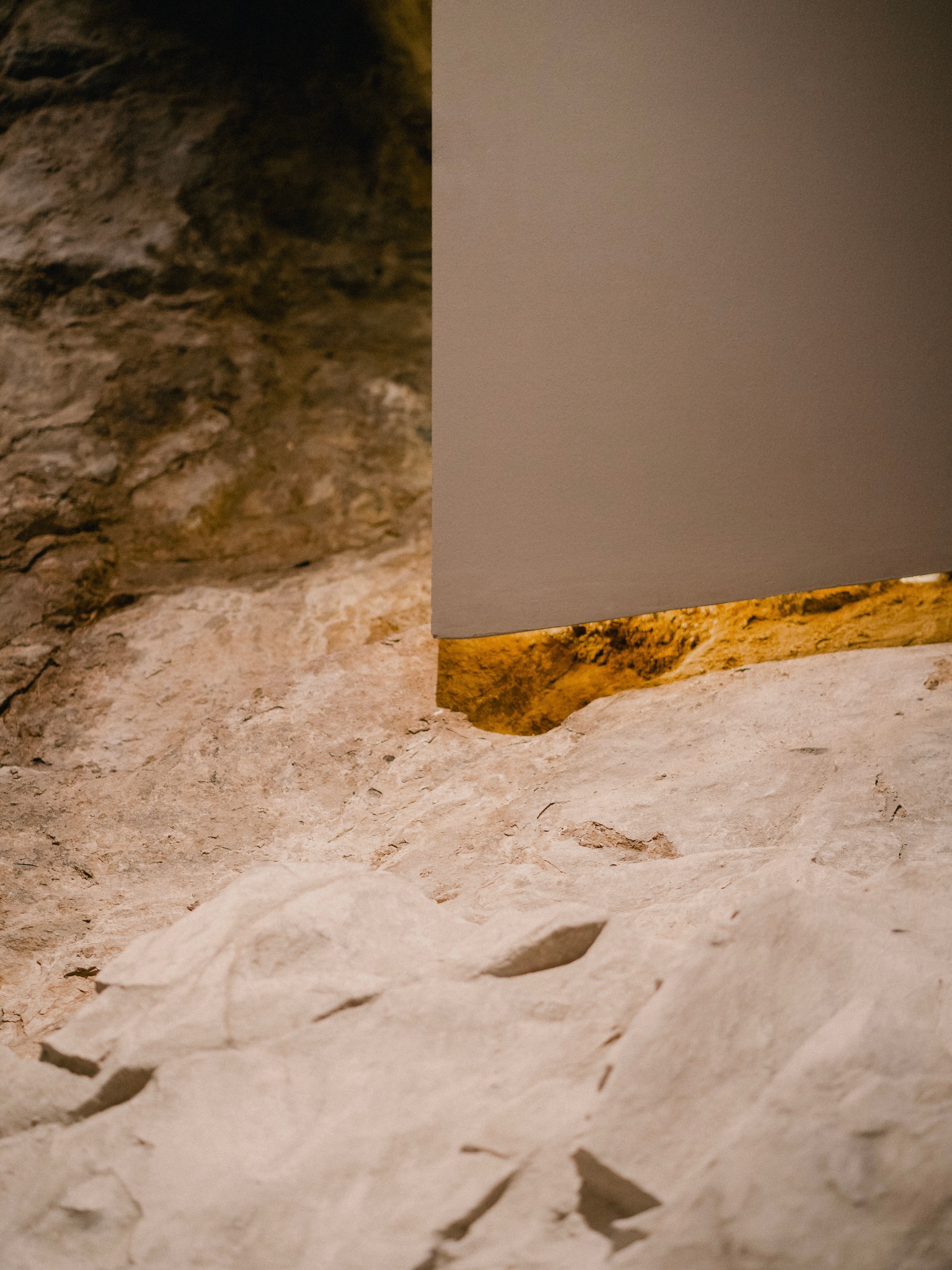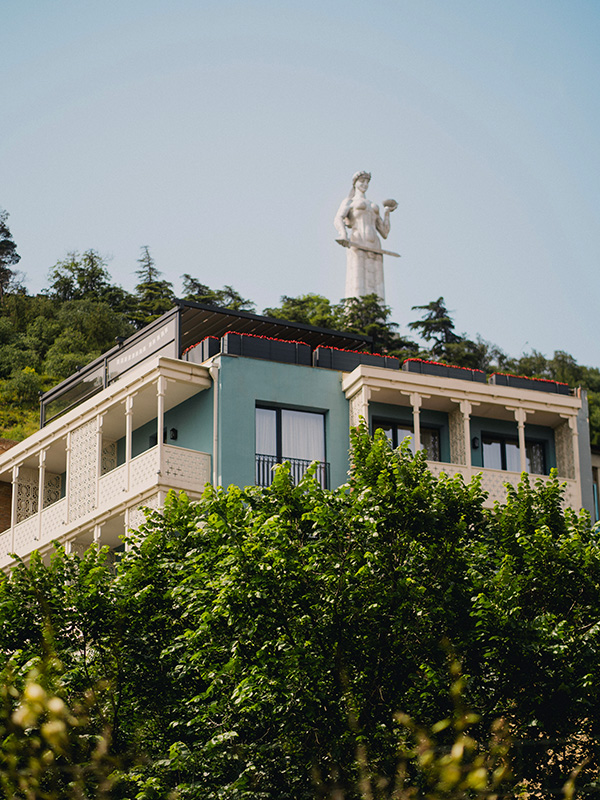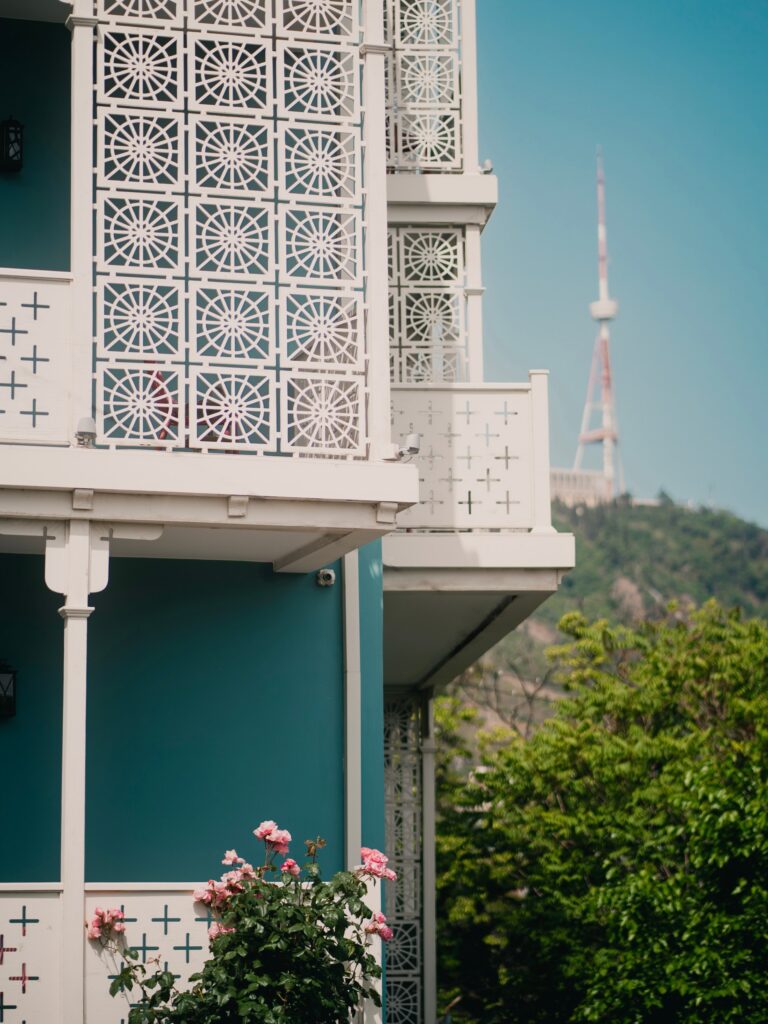Urban & Unique

Urban & Unique

Urban & Unique


History and Heritage of Amante Narikala
Her majesty Narikala sits atop Tbilisi like a crown, visible almost from anywhere in the old town. Though the origin of its name, “Narin Kala” (little fortress) stems from Mongol invasions, legend has it that Narikala Fortress was built by Tbilisi founder, King Vakhtang Gorgasali himself, hundreds of years prior to the Mongols.
Narikala was a tough fortress in its heydey – castle’s elevated position provided an upper hand over the enemy, making it hard to siege its sturdy walls, lofty towers and fortified bulwarks. Fortress’s inner grounds housed the king’s castle until the 18th century.
Castle neighborhood landmarks are well known to locals and for tourists – easy findable, but there are hidden places worth discovering. The area shelters one particular forgotten gem overlooked by many – the ancient “fire shrine” Ateshgah.
Ateshgah is a former Zoroastrian temple located on Gomi street, right at the foot of Narikala. Here, hundreds of years ago, fire – a holy element and symbol of purity – was constantly ablaze.
The origin of a square domed building coincides with the period of Persian Empire’s influence in Georgia, when Zoroastrianism was Christianity’s main competing religion. Sadly, Ateshgah has not survived in its original form; 18th century Ottoman invaders have covered it with another square-shaped building, transforming it into a mosque. Still, the mystical symbols inside the shrine transports us into the city’s rich and colorful past.

In this magical environment, right at the foot of the castle in the old town is located Hotel Amante Narikala . Nestled under the lap of the most famous statue built by prominent Georgian sculptor Elguja Amashukeli “Kartlis Deda” on a historical hillside area and surrounded with gorgeous views. The hotel is a stone’s throw away from the city’s key sights and Tbilisi city center.
With its carved balconies and an arched brick fence, Amante’s exterior overlooks at Kala homage to the old town, while its sleek interior pleases the senses with retro elements and bursts of color.


Our Address
1 Gomi street, 0105, Tbilisi, Georgia
By Car
Approximately 21 minutes via Kakheti Hwy.

